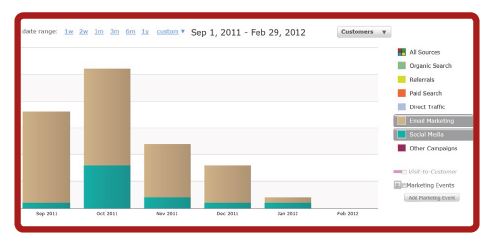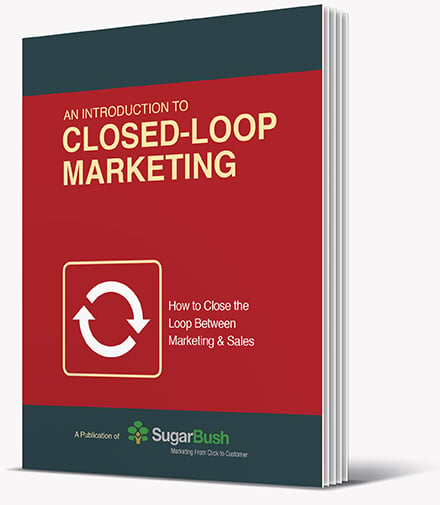How Closed-Loop Marketing Techniques Help Firms Improve Services
“Closed-loop marketing enables us to do better marketing.” In Chapter 3 of the new Ebook “An Introduction To Closed-Loop Marketing”, SugarBush...
2 min read
Mark Parent
February 22, 2016 11:17:27 AM EST

Traditional marketing and advertising methods don't work as well as they used to.
People consume media differently, which means that brands have to find new ways to connect with consumers.
Note the word “connect” in that sentence. Not only can people now fast-forward through television commercials and install ad-blocking software on their browsers, their expectations for how brands interact with them has evolved as well.
No longer do the one-sided communication tactics of traditional marketing and advertising resonate with potential customers. Inbound marketing allows brands to create compelling content and share that across web, social, and mobile channels, giving them a chance to connect with their audience via relevant and personalized content.
So if you feel like your lead generation efforts have stalled with traditional marketing practices, this blog will outline the benefits that implementing inbound marketing strategies can provide for you to more effectively attract and nurture new customers.

Has your lead generation stalled with traditional marketing tactics?
Rev it up with inbound. ![]()
As mentioned above, traditional advertising methods are one-sided. The brand creates an advertisement -- such as a television commercial or display ad -- that consumers see while browsing their favorite media. Consumers have a choice: ignore the advertisement or interact with it. Either way, you don't know the specifics unless you peer into people's living rooms and browser histories.
An inbound marketing strategy is different. It puts you in the driver's seat when it comes to reaching your target audience. When people interact with your brand, you can track their activities and view the results. Even more importantly, you can use that data to inform your future marketing efforts. Monitoring key online metrics is the best way to take advantage of inbound.
In the "old days," consumers didn't have a choice about how they viewed advertising. If they wanted to watch the nightly news, they also had to watch the commercials between each segment. An inbound marketing strategy, however, capitalizes on permission marketing. It allows consumers to "opt in" if they want to receive communications from a brand.
Think about your own email habits. If you receive an email from a company you don't know, how do you respond? If you're like most consumers, you chuck it in the virtual trash bin. If you only send emails to people who asked for them, however, you'll see far better results. Not only will more people open and read your email, but you'll also benefit from an improved reputation.
For these reasons, inbound focuses on creating useful and compelling content. Inbound is not designed to deliver hard-selling messages to consumers, but start conversations that revolve around helpful information, how-to articles, and authentic, open dialogue.

Inbound marketing drives greater engagement and performance than
traditional methods – and does so at a lower cost. ![]()
It always comes down to the numbers, doesn't it? If you want to get more value for every dollar of advertising spend, inbound beats outbound by a considerable margin. Each lead costs less to attract, nurture, and convert, which means that you can use your budget for other pursuits.
This is largely because an inbound marketing strategy uses targeted ads to boost conversions. Instead of displaying an ad or piece of content for everyone in the world, you display it for people who have a genuine interest in your products or services. This cuts down on noise and increases your chances of reaching your target audience effectively.
Inbound also encourages more interaction, engagement, and sharing among your audience. Once prospective customers provide you with an email address or other valuable insight into their behavior, you can determine the type of content they prefer, and in which format. This will allow you to build content and advertising strategies that are more focused and more likely to resonate with your target audience, thus saving you from spending money on ineffective campaigns.
Calculate how much traffic and how many leads you need to generate to reach your business’ goals. Get your free marketing leads calculator to help you determine and plan the best marketing strategies to generate leads and revenue.
Make sure to connect with us on LinkedIn to get valuable insight on the latest news in marketing and website design. Follow us here:

“Closed-loop marketing enables us to do better marketing.” In Chapter 3 of the new Ebook “An Introduction To Closed-Loop Marketing”, SugarBush...

In his latest Ebook download, “An Introduction To Closed-Loop Marketing”, Mark Parent reveals that a lot that even so-called industry experts at...

Let’s face it: marketing isn’t what it used to be. For the most part, we’ve all come to that realization already. The internet has altered the...